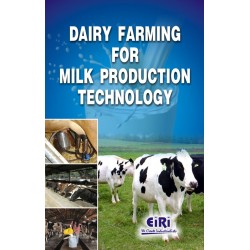Complete Technology Handbook on Egg Production, Preservation and Processing with Project Profiles (Farming, Chemistry, Properties, Application, Microbiology Egg Shell, Quality, Dehydration, Freezing and Value Added Products)
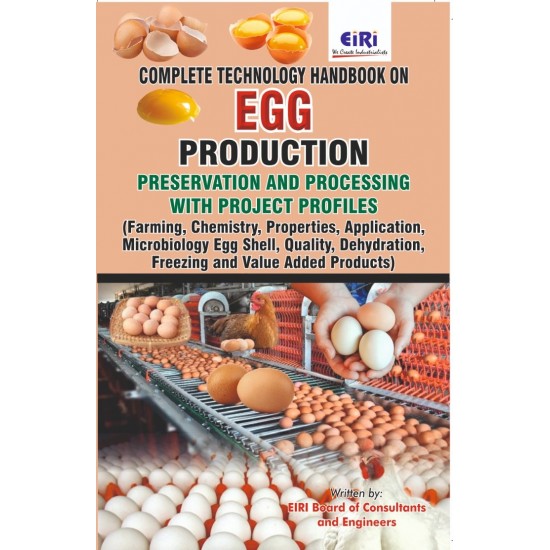
- More than 40 years of experience
- Managed by expert industrial consultants
- ISO 9001-2015 Certified
- Registered under MSME, UAM No: DL01E0012000
- 24/5 Research Support
Get your quesries resolved from an industry expert. Ask your queries before report or book purchase. - Custom Research Service
Speak to the our consultant to design an exclusive study to serve your research needs. - Quality Assurance
All reports are prepared by highly qualified consultants & verified by a panel of experts. - Information Security
Your personal & confidential information is safe & secure.
Complete Technology Handbook on Egg Production, Preservation and Processing with Project Profiles (Farming, Chemistry, Properties, Application, Microbiology Egg Shell, Quality, Dehydration, Freezing and Value Added Products)
Egg products are processed and convenience forms of eggs for commercial, foodservice and home use. These are refrigerated liquid products, frozen products, dried and specialty products. When shell eggs are delivered to the breaking plant, they are put into refrigerated holding rooms. Before breaking, they are washed in water at least 20 degrees warmer than that of the egg and spray-rinsed with a sanitizing agent. They may be moist, but not wet, when they are broken.
Eggs are a highly nutritious food that contains proteins, minerals, fats, iron, phosphorus vitamins (A, B, D, E, and K) needed by human beings. The fully mixed egg contains about 65% water, 12% proteins, and 11% fat. These various nutrient contents present in eggs make it an excellent source for bacterial microflora, including pathogenic bacteria. Thus, various preservation methods are used to eliminate the growth of spoilage-causing microorganisms.
Quality is the sum of the characteristics of given food item which influences the acceptability or preference by the consumer. Grades are used to classified commodity into different levels or ranges of quality such as good, better, best or C, B and A grades. Standard is the description of one or more characteristics of food which divide those in the market into two or more groups called grade. Grades are based on standards. Eggs are usually graded according to established standard. In U.S.A, these are graded according to U.S.D.A standard which have been developed based on their exterior and interior quality parameters. In India, eggs are being graded as per egg grading and marketing rules, 1968.
Following grading, egg and containers are marked by the grade designation and the word “Agnark”. Recently, the Bureau of Indian Standard (BE) has also come up with standard for grading eggs, taking into consideration both exterior and interior quality of eggs.
Complete Technology Handbook on Egg Production, Preservation and Processing with Project Profiles contains chapters on Introduction to Poultry, Egg Farming and Poultry Permission Guidelines, Environmental Guidelines for Poultry and Egg Farming, Biosecurity Measures for Profitable Poultry and Egg Production, Housing for Poultry Farms, Health Management, Prevention from Diseases and Poultry House Disinfection, Chemistry and Characterization of Egg Component, Egg Biosynthesis, Structure, General Composition and Processing of Egg, Eggshell and Membranes and Egg White, Egg Pigments, Minerals, Enzymes, Vitamins and Functional Properties of Egg Components, Egg White Protein and Egg Yolk Lipid and Protein Functionality, Processing of Egg and its Application in Food System, Egg Processing Plant Design, Eggshell Calcium, Application of Eggs in Food Product Development, Egg Innovations and Strategies for Improvement, Shell Egg Quality and Egg Shell and Yolk Colour, Measurement of Shell Egg Quality, Shelf-life of Eggs, Regulations for Shell Eggs in Different Countries, Microbiology, Quality and Safety, Nutrition for Egg Pro-duction and Eggshell Quality, Bioactive Egg Components, Egg Shell Membrane, Egg Nutrition and Human Health, Egg Dehydration, Quality Assurance, Freezing Egg Products, Merchandising Eggs in Supermarkets, Breaking Eggs, Egg-Products Industry, Functional Properties of Eggs in Foods, Hard-Cooked Eggs, Development of Value Added Products of Poultry, Commercial Egg Production in Layers, Poultry Farm Equipment, Plant Economics of Egg Powder and Plant Economics of Egg Tray From Pulp.
Contents-cum-Index
Chapter 1
Introduction to Poultry, Egg Farming and Poultry Permission Guidelines
Poultry Farming
Poultry Products
Production of Eggs
Chicken Production
Farm Management for Poultry 2 Shelter and Housing
Feed for Poultry
Management of Poultry Feed and Water Hygiene
Feed Hygiene Management:
Management of Water
Importance of Poultry
Benefits of Poultry Farming Busines
Poultry permission, guidelines
Getting license and permits for poultry farm in India
Application for license
Poultry farm distance from village
Distance between poultry farms and residences
List of documents required to submit to get a poultry license in India
Documents Required for Poultry Permission in India
Poultry Farm Insurance Requirement
What are the licenses required for starting poultry farm in India
Supervision and reporting
Single window clearance poultry farm license in India
Marketing rules and regulations for poultry and eggs
Salmonella rules and regulations for poultry and eggs
Welfare rules and regulations for poultry
Introduction to Egg Industry
Structure of Egg
Functional Properties
Processing of Egg
Processing of Egg
Washing and Sanitizing
Egg Breaking
Modern Egg Industry
Primary Breeders
Hatching eggs
Incubation
Hatching
Pullet Rearing
Egg Production
Egg Collection and Marketing
Further Processed Products
Chapter 2
Environmental Guidelines for Poultry and Egg Farming
Poultry Farming Process
Breeder Farms (Breeding)
Hatchery farms (Hatching)
Layer (Egg production)
Broiler (Meat Production)
Deep Litter System
Cage System
Gaseous emission (NH3 & H2S) and Feed Mill Dust
Environmental Guidelines for Poultry Farms farms
Gaseous emission (NH3 & H2S) and Feed Mill Dust
Management of solid wastes (Solid Wastes contains Manure/litter, Hatchery Debris and Dead Birds)
Waste water Management
Other issues
Siting Criteria
Regulatory/Monitoring Mechanism for Poultry Farms
Chapter 3
Biosecurity Measures for Profitable Poultry and Egg Production
Importance of biosecurity measures
Risk factors for poultry industry
Risks to Public Health
Biosecurity measures to be applied
Chapter 4
Housing for Poultry Farms
Water Supply
Poultry Building Orientation
Aesthetic Value
House Construction
Criteria for selecting a manufactured house
Foundations
Floors
Walls and Ends
Trusses
Roofs
Insulation
Vapor Barriers
Ventilation
Forced-Air Systems
Types of pressure in ventilation
General recommendations
Chapter 5
Health Management, Prevention from Diseases and Poultry House Disinfection
General principles for prevention of diseases
What to be done at the time of an out break
Vaccination schedule
Important diseases of chicken
Fowl Pox
Newcastle Disease
Infectious Bronchitis
Avian Influenza
Infectious Laryngotracheitis
Mycoplasma synoviae
Aspergillosis
Marek’s Disease
Lymphoid Leukosis
Infectious Bursal Disease
Avian Encephalomyelitis
Egg Drop Syndrome
Fowl Cholera
Omphalitis
Pullorum
Necrotic Enteritis
Staphylococcus
Management-related Problems
Nutritional problems
Stress
Cannabilism and feather picking
Management of Flocks at High Temperature
Mechanisms of Disease Transmission
Poultry house disinfection
Methods to evaluate the contamination level in poultry house disinfection programmes
Disinfection methods in poultry house disinfection
Kinds of disinfectants
Chapter 6
Chemistry and Characterization of Egg Component
Egg White
Ovalbumin
Conalbumin
Ovomucin
Lysozyme
Avidin
Ovoglobulin
Ovoinhibitor
Egg Yolk
Chemical composition of egg contents
Chemical Analysis of an Egg
Composition of an Eggshell
Foam
Chapter 7
Egg Biosynthesis, Structure, General Composition and Processing of Egg
Eggshell calcification
Structure of the egg
Processing Of Egg
Introduction
Classification of Egg Products
Frozen Egg Products
Production of frozen egg
Production of spray dried whole egg
Functional Properties of Egg Content
Coagulation
Emulsification
Foaming
Quality checks and storage of egg
Changes occur in egg during storage
Indicators to Determine Spoilage in Eggs
Preservation of the Shell Eggs
Water glass method
Dry methods
Thermization or heat treatment methods
Chapter 8
Eggshell and Membranes and Egg White
Shell Membranes
The Egg Shell
The Egg White
The Egg Yolk
Egg yolk constituents and structures
Fat in the egg yolk
Chapter 9
Egg Pigments, Minerals, Enzymes, Vitamins and Functional Properties of Egg Components
Proteins
Vitamins
Vitamins in an egg
Enzymes
Pigments
Minerals in an egg
Vitamins and minerals explained
Functional Properties of Egg Components
Functional uses
Egg Uses in Wider Field
Chapter 10
Egg White Protein and Egg Yolk Lipid and Protein Functionality
Low in calories but high in protein
Low in fat and free of cholesterol
Egg yolk lipid and protein functionality
Chapter 11
Processing of Egg and its Application in Food System
Holding
Equipment standards
Breaking
Pasteurisation
Refrigerated liquid egg products
Frozen egg products
Dried egg products
Egg white solids
Dried whole egg and yolk solids
Plain unstabilised whole egg products
Egg Processing Industry Overview
Egg Processing Market Trends
The Process of Egg Production
Egg Laying
Egg Collection
Egg Washing
Egg Inspection
Egg Grading
Egg Packing
Egg Products Processing
Chapter 12
Egg Processing Plant Design
Liquid Egg Processing Line
Technological flowchart of the liquid egg yolk and white processing line
Key Machine of Liquid Egg Processing Line
Egg Washing, Drying and Sterilizing Machine
Egg Washing, Drying and Sterilizing Machine
Egg Breaking&Separating Machine
Liquid egg storage batch tank
Egg Yolk & Egg White Pasteurizer
Liquid egg filling machine
CIP system
Process flowchart for egg shell and fruit peel for powder preparation
Chapter 13
Eggshell Calcium
Benefits & uses of eggshell powder
How to make the best calcium supplement from eggshells
Eggshell Powder Making Machine
Eggshell processing process
Eggshell drying
To remove impurities
Eggshell powder milling
Sifting and packaging
Chapter 14
Application of Eggs in Food Product Development
Use and Function of Eggs in food
Uses of eggs in food preparation
Adhesion
Aeration
Antimicrobial
Binding
Clarification
Coagulation
Coating
Colour
Crystallisation control
Edible packaging
Emulsification
Flavour and taste
Fortification
Industries using egg products
The benefits of egg products
Egg food safety
Egg purchase/receival
Storing whole eggs
Handling eggs
Equipment, utensils and food contact surfaces
Raw or lightly cooked egg products
Preparation of acidified raw egg products
Preparation of desserts
Safe temperature and time
Handling, storage and display of raw egg products
Safer alternatives
Food business responsibility
Documentation
Chapter 15
Egg Innovations and Strategies for Improvements
Think Packaging Design
Think POS Materials
Think Marketing Materials
Think Cross-Media Campaigns
Think Market Research
Think Consumer Insights
Think Category Management
Chapter 16
Shell Egg Quality and Egg Shell and Yolk Colour
Conserving Egg Shell Quality
Interior Egg Quality
Conserving Interior Egg Quality
Common eggshell quality problems and causes
Solutions for eggshell quality in older layers
Midnight feeding in hot climates
Nutrition supplements
Liquid Ca supplements
Maintaining Egg Shell Quality
Egg shell and yolk colour
Incidence
Pale yellow vs. bright yellow egg yolks
Which colour egg yolk is healthier?
What does an orange egg yolk mean?
Are orange egg yolks safe to eat?
Does an orange egg yolk mean the egg is fresh?
Why are farm fresh eggs more yellow?
Why are store bought egg yolks so pale?
Does an orange egg yolk mean the egg is more nutritious?
Different egg yolk colours and their Nutrition relevance
Understanding Yolk Colour Variation
Nutritional Implications of Egg Yolk Colour
Taste, Texture, and Consumer Preferences
Egg Quality Beyond Yolk Colour
Chapter 17
Measurement of Shell Egg Quality
Introduction
Measuring shell quality
Measuring shell colour
Experimental Procedures
Egg Selection and Handling
Specific gravity
Shell colour
Experimental Results
Shell colour and hatchabiity
Specific gravity and hatchability
Chapter 18
Shelf-life of Eggs
Advice
Chapter 19
Regulations for Shell Eggs in Different Countries
Shell Eggs
Breaking Plants and Egg Products
USDA standard for edible hen eggs
Grades of Shell Eggs
Additional tolerances
Shell Egg Specifications: A Comprehensive Guide
Product Description
Grade Requirements
Egg Count and Packaging
Labeling of Shipping Container
Official Certification
Special Requirements
US Poultry Industry Manual - Whole shell eggs
Whole Shell Eggs
Clean-in-Place Requirements for Liquid Egg Tankers, Lines, and Silos
Liquid Egg Tanker Exterior Wash Procedure
Egg Shells
Inedible Liquid Egg
Manure
Mortalities
Chapter 20
Microbiology, Quality and Safety
Introduction
Contamination source and causes
Spoilage of egg
Non-microbial spoilages
Microbial spoilages
Egg Quality and Safety
Maintaining the Freshness of Eggs
Testing Eggs for Freshness
Plastic eggs - a myth
Other myths about egg quality
For traders and retailers
For regulatory staff and laboratories
Chapter 21
Nutrition for Egg Pro-duction and Egg shell Quality
Egg production cycle
The importance of pullet condition on egg production
Main nutrients for egg production
Amino acids
Vitamin D3
Calcium
Trace minerals
Other related factors
Heat stress
Energy
Protein
Ovalbumin
Conalbumin
Ovamucoid
Ovomucin
Lysozyme
Avidin
Ovoglobulin
Ovoinhibitor
Egg yolk
Chapter 22
Bioactive Egg Components
Egg Yolk Bioactive Components
Avian IgY versus Mammalian IgG
Applications and uses of IgY
Egg yolk bone peptides (Bonepep)
Lecithin
Carotenoids
Egg White Bioactive Components
Ovalbumin
Ovomucin
Cystatin
Lysozyme
Avidin
Egg Shell Bioactive Components
Egg Shell Membrane Bioactive Components
Value addition of eggs
Organic Eggs
Designer Eggs
Enriched Eggs
Folic Acid, Iron and Lutein Enriched Eggs
Herbal Enriched Designer Eggs
Anti-Oxidants Enrichment
Pigment Enrichment
IgY enriched egg
Hypocholesterolemic Egg
Chapter 23
Egg Shell Membrane
Structural features of Eggshell Membrane
Cuticle
Cracked Eggs
Issues with Poor Egg Shell Quality
What Influences Egg Shell Quality?
The Importance of Optimal Nutrition
Egg Size Management
Use of Eggshell Membrane
Functionality of water soluble Eggshell Membrane
Functionality of water soluble Eggshell Membrane
Eggshell Membrane Powder
How Does Eggshell Membrane Powder Work?
Chapter 24
Egg Nutrition and Human Health
Nutrition
Nutritional Composition of Eggs
Protein
Vitamins
Carotenoids
Minerals
Positive Contribution to Human Health
Cardiovascular Health
Brain Health
Eye Health
Weight Management
Muscle Health
Immune System Support
Optimal Consumption of Eggs
Importance of Eggs on Sustainability
Chapter 25
Egg Dehydration
Egg product dehydration
Treatments of liquid egg products before dehydration
Desugarisation
pH modifications
Co-drying
Concentration
Drying technologies and powder properties
Spray-drying
Other drying technologies
Egg white dry-heating
Different types of drying processes used to make egg powders
Pasta drying
Atomization Spray drying
Freeze-drying
Vaporization Spray drying
Chapter 26
Quality Assurance
Objective egg quality and subjective appreciation
External egg quality
Internal egg quality
Factors influencing egg quality before and after laying
Factors influencing egg quality prior to oviposition
Factors influencing egg quality after oviposition
Egg traceability
European legislation on traceability
Chapter 27
Freezing Egg Products
Introduction
Product Changes Due to Freezing
Raw Egg White
Raw Yolk
Use of preservatives
Immersion on liquids
Coating
Natural preservatives
Thermal processing
Pasteurization of eggs
Steam method
Thermostabilization
Preservation by drying
Use of low temperature
Chilling
Freezing
Ultrasound
Microwave method
Freeze-drying or cryodesiccation
High-pressure process (HPP)
Pulse Electric Field (PEF)
Ozone
Chapter 28
Merchandising Eggs in Supermarkets
Role of the supermarket dairy department
Implications from dairy department operating data
Merchandising strategies of eggs & poultry products
Markets and marketing channels
Markets for Eggs and Meat
Egg market
Sale of broiler meat
Merchandising Channels for Eggs and Meat
Direct Merchandising
Merchandising intermediaries
Digital Merchandising
Merchandising Strategies of Table Poultry Eggs in Developed Country Like USA
A Consumer-driven Market
Tips for merchandising eggs from around the world
Health benefits of eggs
Beyond human consumption
Promotion
Chapter 29
Breaking Eggs
Industrial production of liquid egg products
Shell eggs quality and storage
Shell eggs breaking
Breaking
Egg white/yolk separation
Filtration and cooling
In-Line Eggs
Off-line (Nest Run) Eggs
Egg Breaking Machines and Products
Steps in egg breaking
Breaking machines
Non-pasteurized liquid egg products
Non-pasteurized liquid egg products movement
Pasteurized liquid egg products movement
Chapter 30
Egg-Products Industry
Global Egg and Egg Products Market: Segment Analysis
Global Egg and Egg Products Market: Drivers and Restrains
Poultry by-products
Manure
Egg Shells
Inedible Liquid Egg
Production cycles of egg-type chickens
Replacement Pullets-Brooder House
Physiological Development of Pullets
Flock Uniformity
Lighting
Laying Hens
Feed and Water
Egg Collection
Light
House Temperature
Mortality
Chapter 31
Functional Properties of Eggs in Foods
Adhesion
Aeration/Foaming/Structure
Antimicrobial
Binding
Browning/Color
Clarification
Coagulation/Thickening
Coating/Drying/Finishing/Gloss/Insulation
Crystallization Control/Freezability
Edible Packaging Film
Emulsification
Flavor
Fortification/Protein Enrichment
Humectancy/Moisturizing
Leavening
pH Stability
Richness
Shelf Life Extension
Tenderization/Texture
Whipping
Chapter 32
Hard-Cooked Eggs
Top tips for hard-boiled eggs
Method one: continuous boiling
Method two: from cold and leaving to rest
Top recipes using hard-boiled eggs
Healthy salad niçoise
Egg mayo & watercress rolls
Caesar salad burgers
Japanese ramen noodle soup
Kale & salmon kedgeree
Chapter 33
Development of Value Added Products of Poultry
Commercial Poultry Meat Products
Emulsion Products
Processing of Sausages
Restructured/Low Fat Chicken Products
Cured and Smoked Products
Enrobed/Coated Products
Retort Pouched Products
Heritage Products
Value Addition to Edible by Products
Commercial Egg Products
Certain commercialized egg product preparations
Advantage of Poultry Products Marketing
Production Cost
Prospects of Future Poultry Products Marketing
Strength: Technology Identified
Egg patty
Preparation
Egg Rolls
Egg pancake
German Eierkuchen (egg pancakes)
Egg pancakes with sour cream
Enrobed egg
Chapter 34
Commercial Egg Production in Layers
Egg Production Expectation
Factors that Affect Egg Production of Poultry
How To Manage Egg Producing Hens?
How Should You Plan Your Poultry for Maximum Egg Production?
How to identify the laying hens?
What’s the Reasons of Hens to Stop Laying Eggs?
Cage production systems
Cage free production systems
Barn production
Free range production
Which housing system is best?
How to Get Your Chickens to Lay More Eggs
Keep Your Brood Safe
Keep Their Space Clean
Add More Light
Choose The Right Breed
Be Vigilant Against Parasites
Feed Them a Balanced Diet
Age is a Factor
Let Your Chickens Free-Range
Supplement Calcium
Types of Feed for Laying Hens
Selecting the Best Feed for Laying Hens
The Best Feed is Vital for Maximizing Egg Production
Chapter 35
Poultry Farm Equipment
Incubation equipments
Setter
Product Specification
Hatcher
Compressed air system
Emergency standby electric plants
Hatchery automation equipments
Egg handling equipments
Hatching egg trays
Hatching egg transfer machines
Egg candler
Brooder equipments
Charcoal stove/kerosene stove
Gas brooder
Electrical brooder
Infra-red bulbs
Watering equipment
Pan and jar
Bell waterer
Nipple drinkers
Manual drinker
Poultry feeding equipment
Circular feeders
Automatic feeders
Chapter 36
Plant Economics of Egg Powder
Land & Building
Plant & Machinery
Fixed Capital
Working Capital Requirement/Month
Total Capital Investment
Turn Over/Annum
Chapter 37
Plant Economics of Egg Tray From Pulp
Land & Building
Plant & Machinery
Fixed Capital
Working Capital Requirement/Month
Total Capital Investment
Turn Over/Annum
How to Make Project Report?
Detailed Project Report (DPR) includes Present Market Position and Expected Future Demand, Technology, Manufacturing Process, Investment Opportunity, Plant Economics and Project Financials. comprehensive analysis from industry covering detailed reporting and evaluates the position of the industry by providing insights to the SWOT analysis of the industry.
Each report include Plant Capacity, requirement of Land & Building, Plant & Machinery, Flow Sheet Diagram, Raw Materials detail with suppliers list, Total Capital Investment along with detailed calculation on Rate of Return, Break-Even Analysis and Profitability Analysis. The report also provides a birds eye view of the global industry with details on projected market size and then progresses to evaluate the industry in detail.
We can prepare detailed project report on any industry as per your requirement.
We can also modify the project capacity and project cost as per your requirement. If you are planning to start a business, contact us today.
Detailed Project Report (DPR) gives you access to decisive data such as:
- Market growth drivers
- Factors limiting market growth
- Current market trends
- Market structure
- Key highlights
Overview of key market forces propelling and restraining market growth:
- Up-to-date analyses of market trends and technological improvements
- Pin-point analyses of market competition dynamics to offer you a competitive edge major competitors
- An array of graphics, BEP analysis of major industry segments
- Detailed analyses of industry trends
- A well-defined technological growth with an impact-analysis
- A clear understanding of the competitive landscape and key product segments
Need Customized Project Report?
- Ask for FREE project related details with our consultant/industry expert.
- Share your specific research requirements for customized project report.
- Request for due diligence and consumer centric studies.
- Still haven't found what you're looking for? Speak to our Custom Research Team
About Engineers India Research Institute:
Note: We can also prepare project report on any subject based on your requirement and country. If you need, we can modify the project capacity and project cost based on your requirement.
Our Clients

Our Approach
- Our research reports comprehensively cover Indian markets (can be modified as per your country), present investigation, standpoint and gauge for a time of five years*.
- The market conjectures are produced on the premise of optional research and are cross-accepted through associations with the business players
- We use dependable wellsprings of data and databases. What's more, data from such sources is handled by us and incorporated into the report
Why buy EIRI reports?
- Our project reports include detailed analysis that help to get industry Present Market Position and Expected Future Demand.
- Offer real analysis driving variables for the business and most recent business sector patterns in the business
- This report comprehends the present status of the business by clarifying a complete SWOT examination and investigation of the interest supply circumstance
- Report gives investigation and top to bottom money related correlation of real players/competitors
- The report gives gauges of key parameters which foresees the business execution





















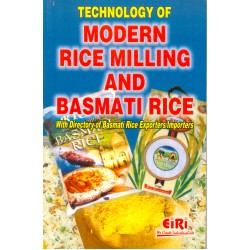
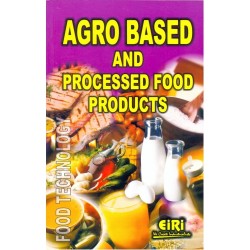

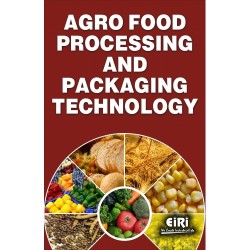
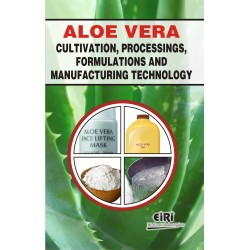
-250x250h.jpg)
